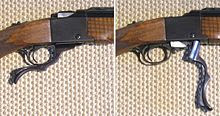I found this on the Web one day. So I thought I would share it you.
Sadly until I move out of the People’s Republic of California & back to America. I will not be able to follow thru on this myself.
Grumpy
/www.thegunwriter.com/14837/

Your standard Remington 700 in 22-250. Its a great rifle after you make sure that the trigger group is squared away.
Or if you really want to go “Whole Hog” then. You do a whole lot worst than with a High Wall in the caliber.


So way back when I was in University, which was a hell of a long time ago. I started to hear and read about this round. That & a few like minded classmates of mine. Told me about what they had experienced with it.

| .22-250 Remington | ||||||||||||||||||||||||
|---|---|---|---|---|---|---|---|---|---|---|---|---|---|---|---|---|---|---|---|---|---|---|---|---|
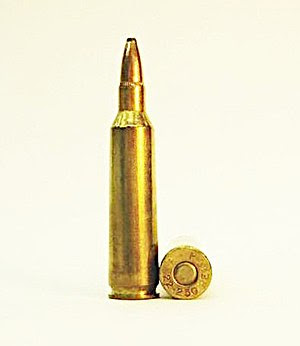 |
||||||||||||||||||||||||
| Type | Rifle | |||||||||||||||||||||||
| Place of origin | USA | |||||||||||||||||||||||
| Production history | ||||||||||||||||||||||||
| Designer | Grosvenor Wotkyns, J.E Gebby & J. Bushnell Smith | |||||||||||||||||||||||
| Designed | 1937 | |||||||||||||||||||||||
| Manufacturer | Remington | |||||||||||||||||||||||
| Produced | 1965-Present | |||||||||||||||||||||||
| Variants | .22-250 Ackley Improved | |||||||||||||||||||||||
| Specifications | ||||||||||||||||||||||||
| Parent case | .250-3000 Savage | |||||||||||||||||||||||
| Case type | Rimless, bottleneck | |||||||||||||||||||||||
| Bullet diameter | .224 in (5.7 mm) | |||||||||||||||||||||||
| Neck diameter | .254 in (6.5 mm) | |||||||||||||||||||||||
| Shoulder diameter | .414 in (10.5 mm) | |||||||||||||||||||||||
| Base diameter | .469 in (11.9 mm) | |||||||||||||||||||||||
| Rim diameter | .473 in (12.0 mm) | |||||||||||||||||||||||
| Case length | 1.912 in (48.6 mm) | |||||||||||||||||||||||
| Overall length | 2.35 in (60 mm) | |||||||||||||||||||||||
| Rifling twist | 1-12, 1-14 | |||||||||||||||||||||||
| Primer type | Large rifle | |||||||||||||||||||||||
| Ballistic performance | ||||||||||||||||||||||||
|
||||||||||||||||||||||||
| Source(s): Hodgdon [1] | ||||||||||||||||||||||||
The .22-250 Remington is a very high-velocity (capable of reaching over 4000 feet per second), short action, .22 caliber rifle cartridgepri
Contents
[hide]
History[edit]
The .22-250 started life as a wildcat cartridge developed from the .250 Savage case necked down to take a .224 caliber bullet. In the early days of the cartridge there were several different versions that varied only slightly from one to the next, including one developed in 1937 by Grosvenor Wotkyns, J.E. Gebby and J.B. Smith who named their version the 22 Varminter.[3]
The .22-250 is similar to, but was outperformed by the larger .220 Swift cartridge. However, it is in much wider use and has a larger variety of commercially available factory ammunition than the Swift. This makes it generally cheaper to shoot. The smaller powder load also contributes to more economical shooting if a person is doing their own reloads. Despite common myths regarding longer barrel life on a 22-250 vs the Swift or other calibers, that is directly related to shooter habits, allowing the barrel to cool between volleys and the speed of the bullet, an important factor for high-volume shooters. Both the Swift and the 22-250 shoot at very similar velocities and bullet weights so barrel wear when used and cooled equally is identical between the two calibers. Due to its rimless case the 22-250 also feeds from a box magazine with ease.
In 1937 Phil Sharpe, one of the first gunsmiths to build a rifle for the .22-250 and long time .220 Swift rifle builder, stated, “The Swift performed best when it was loaded to approximately full velocity,” whereas, “The Varminter case permits the most flexible loading ever recorded with a single cartridge. It will handle all velocities from 1,500ft/s up to 4,500ft/s.”[6]
Sharpe credited the steep 28-degree shoulder for this performance. He insisted that it kept the powder burning in the case rather than in the throat of the rifle, as well as prevented case stretching and neck thickening. “Shoulder angle ranks along with primer, powders, bullets, neck length, body taper, loading density and all those other features,” he wrote. “The .22 Varminter seems to have a perfectly balanced combination of all desirable features and is not just an old cartridge pepped up with new powders.”[6]
Accuracy was consistently excellent, with little need for either case trimming or neck reaming, and Sharpe pronounced it “my choice for the outstanding cartridge development of the past decade.” He finished by saying he looked forward to the day when it would become a commercial cartridge.[6]
Commercial acceptance[edit]
In 1963 the Browning Arms Company started to chamber its Browning High Power Rifle in the .22-250, at the time a wildcat cartridge. This was a risky yet historical move on Browning’s part as there was no commercial production of the .22-250 at the time. John T. Amber, reporting on the development of the Browning rifle in the 1964 Gun Digest, called the event “unprecedented”. “As far as I know,” he wrote, “this is the first time a first-line arms-maker has offered a rifle chambered for a cartridge that it—or some other production ammunition maker—cannot supply.” Amber foresaw difficulties for the company but “applauded Browning’s courage in taking this step”. He said he had his order in for one of the first heavy-barrel models, expected in June 1963, and added, “I can hardly wait!”[6]
Two years later in 1965 Remington Arms adopted the .22-250, added “Remington” to the name and chambered their Model 700 and 40 XB match rifles for the cartridge along with a line of commercial ammunition, thus establishing its commercial specification.[7]
The .22-250 was the first non-Weatherby caliber offered in the unique Weatherby Mark V rifle.
Military acceptance[edit]
Both the British Special Air Service and the Australian Special Air Service Regiment used Tikka M55 sniper rifles chambered in .22-250 for urban counter-terrorism duties in the 1980s, in an attempt to reduce excessive penetration and ricochets.[8]
Performance[edit]
Typical factory-loaded .22-250 Remington can propel a 55 grain (3.56 g) spitzer bullet at 3,680 ft/s (1122 m/s) with 1,654 ft·lbf (2,243 J) of energy.[9] Many other loads with lighter bullets are used to achieve velocities of over 4,000 ft/s (1,219 m/s), while still having effective energy for use in hunting small game and medium-sized predators.
The .22-250 is currently the fastest production cartridge, surpassing the .204 Ruger. This round is loaded by Hornady under their Superformance line and is a 35 grain, non-toxic, fragmenting varmint bullet at 4450 feet per second (1356 m/s) from a 24″ barrel.
It is particularly popular in the western states of the USA where high winds often hinder the effectiveness of other varmintrounds in prairie dog hunting. Many states in the USA have minimum caliber restrictions on larger game such as deer, although most states do allow the cartridge to be used for big game.
Israel & Guns


The Rifle that is shown below here. Is a Ruger M77 Mk II Heavy Barrel Rifle chambered in 223.
Hopefully someday I can…..
A. Afford it
B. Find one to buy (They are might scarce around here in the People’s Republic of California)


Come on Lottery or Some Kind Soul donates some money to the cause!
*Hint there is a place to donate at the bottom of the page!*
The Ruger # 1 Rifle



Ruger No. 1
| Ruger No. 1 | |
|---|---|

Ruger No. 1 rifle (with underlever down to open action)
|
|
| Type | Falling Block Rifle |
| Place of origin | United States |
| Production history | |
| Designer | Bill Ruger |
| Designed | 1966 |
| Manufacturer | Sturm, Ruger & Co., Inc. |
| Unit cost | $1299[1] |
| Produced | 1967 – present[2] |
| Variants | Standard, Varmiter, Light Sporter, International, Tropical, Medium Sporter. |
| Specifications | |
| Weight | 7 pounds (3.2 kg)[1] |
| Length | 36.5–42.5 inches (93–108 cm)[1] |
| Barrel length | 20–28 inches (51–71 cm)[1] |
|
|
|
| Cartridge | Various (see article) |
| Action | Farquharson-Style Hammerless falling block |
| Sights | none, or open sights |
The Ruger No. 1 is a single-shot rifle, with Farquharson-styleinternal hammer falling block action, manufactured by Sturm, Ruger. It was introduced in 1967.[3] An underlever lowers the block allowing loading and cocks the rifle. Lenard Brownell, commenting on his work at Ruger, said of the No. 1: “There was never any question about the strength of the action. I remember, in testing it, how much trouble I had trying to tear it up. In fact, I never did manage to blow one apart.”[4]
A shotgun-style tang safety works on the hammer and sear. Available with an Alexander-Henry, Beavertail, or Mannlicher style forearm in a multitude of calibers.
Contents
[hide]
Available cartridges[edit]
Over the years, the No. 1 has been chambered in several different cartridges, among them .204 Ruger, .22 Hornet, .218 Bee, .222 Remington, .223 Remington, .22 PPC, .22-250 Remington, .220 Swift, 6mm PPC, 6 mm Remington, 6.5 Creedmoor, .243 Winchester, .257 Roberts, .25-06 Remington, .264 Winchester Magnum, .270 Winchester, .270 Weatherby Magnum, 6.5mm Remington, 6.5×55mm, 6.5×284 Norma, 7×57mm, 7mm-08, .280 Remington, 7 mm Remington Magnum, 7mm STW, 7.62x39mm, .308 Winchester, .30-30 Winchester, .30-40 Krag, .30-06 Springfield, .303 British, .300 Winchester Magnum, .300 H&H Magnum, .300 Weatherby Magnum, .338 Winchester Magnum, .357 Magnum, .375 H&H Magnum, .375 Ruger, .38-55 Winchester, .404 Jeffery, .405 Winchester, .416 Remington Magnum, .416 Ruger, .416 Rigby, .45-70 Government, .460 S&W Magnum, .458 Winchester Magnum, .458 Lott, 9.3×74mmR and .450/400 Nitro Express
The Broom Handle Mauser – C96


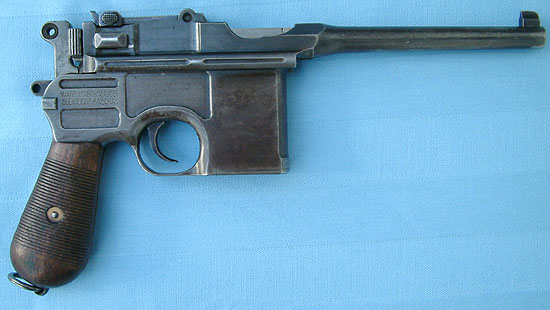
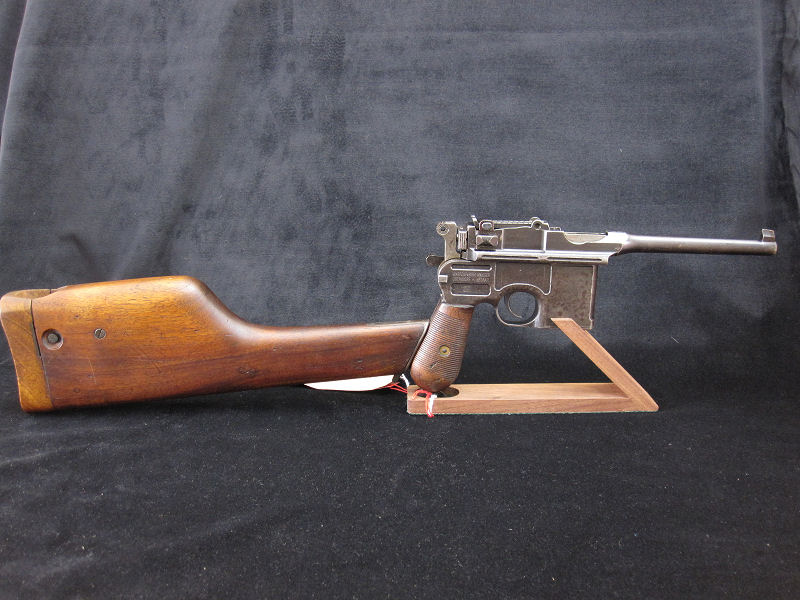
A Sweeping History of the Mauser C96 Broomhandle Pistol
The Gun That Mauser Didn’t Want Made
Despite the name, Paul Mauser did not design the Mauser C96. Credit goes to the Feederle brothers, Fidel, Friedrich, and Josef. Fidel was a higher up in one of Mauser’s workshops and he and his brothers worked up a prototype in this facility (without the knowledge and then against the wishes of Fidel’s big name boss) for what they called the P-7.63 or Feederle Pistol.

In spite of his reservations about the broomhandled handgun, Mauser was a businessman first (as it turns out, most gun tycoons are) and, with the oddly alluring design finalized in ’96, he put the pistol into production at his Oberndorf-Necker factory in Germany. Originally called the “Mauser Military Pistol” (in hopes of courting lucrative military contracts) not a single country’s armed forces adopted it as their primary sidearm—though this didn’t stop Mauser from continuing production of the weapon until 1939 as the gun caught fire on the commercial market in other countries.
The first group to truly embrace the pistol were British officers and this was largely the fault of legendary British gunmakers Westley Richards, who imported and resold C96s for private purchase (usually from military personnel). This lead to a taste for imported Broomhandles among the middle and upper classes and the C96 sold out in its first year of manufacture. It would maintain this pace right up until the start of WWI.
Description and Variants

The first C96s were pure, albeit unorthodox, handguns—a box magazine in front of the trigger, a longer barrel and the namesake grip that to some eyes is shaped like a broom handle. It came with six, 10, or 20 round magazines and, because the muzzle velocity was so high, the gun was “approved” out to almost a 200 foot maximum effective range.
Later models however began to sprout various odd appendages such as wooden shoulder stocks that doubled as carrying cases or holsters or lengthened or widened the grips and barrels. Indeed, the length of the barrels in some models was so long, some derivative could be considered carbines. Other variants included, in addition to the shoulder stock/case, holsters that would accommodate a host of strange assortments like spare clips, cleaning tools or other survival gear. Some examples even have clips on the weapon to attach accessories.
The very first military model was produced in 1912 and used throughout World War I. It had a barrel length of 5.51 inches, and was one of the derivative models that sported a shoulder stock and brown leather holster. The military models originally fired the 7.63mm rounds, but the demands of the war forced makers to upgrade to the more powerful 9mm Parabellum rounds. Those models had a large red number 9 engraved into their butts (and are among the most collectible C96s). They weighed 2.69 pounds, had 10-round straight-box magazines, and had a muzzle velocity of 1,420 feet per second for the 9mm rounds.
Some C96 variants even had fully automatic capabilities but the rate of fire was so high on auto that a 20 round magazine was gone before the shooter could bring the weapon to bear on a downrange target. Handguns are not well suited to fully auto firing mode as the recoil pushes the muzzle upwards even in the hands of an expert and the ammo was usually spent before you could arrest the muzzle climb. On semi-auto it was a different story as the pistol performed very well when fired singly or with bursts of two or three rounds.
Around the World from Germany to China
Mauser manufactured approximately one million C96 pistols between 1896-1939 but that number does not reflect the unknown thousands and perhaps millions produced in Spain and China. These figures have been largely lost to history because of poor record keeping from manufacturers in these countries.

The list of wars and colonial insurrections that this weapon saw service in would make your eyes to glass over but notably it was carried by Winston Churchill in the Battle of Omdurman, Ethiopian Emperor Haile Selassie, T.E. Lawrence (a.k.a. Lawrence of Arabia) during his adventures in the Middle East and of course Han Solo (Lucas chose the C98 as the design for Han’s DL-44 Heavy Blaster in the Star Wars Trilogy).
The biggest end user ended up being China, initially during the Chinese Civil War and eventually as a military and police staple. In China the C96, now called the Shanxi Type 17, was unique in that it was chambered in .45 ACP and nicknamed the ‘box cannon’ (盒子炮) due to the square shape of its internal magazine and the fact that the weapon was carried in its own “box”, actually a holster that doubled as a detachable stock. Other famous Chinese models were the Hanyang C 96 and the Type 80. The Spanish names were the Astra Model 900 and the super rare “Royal” MM34 machine pistol.
Swept Into the Dustbin of History
When the gun worked, it was a formidable weapon, but glaring design flaws held the gun back as shooters began to favour other modern semi-automatics. The first stumbling block (and the one from which all other problems stemmed) was the devices damnably complicated cartridge feeding system.
Rounds were fed into the magazine in front of the trigger mechanism from above by means of a strip clip. This system was clumsy but functional. The real problems came during the intricate set of internal processes that had to be performed before a casing could be ejected and the next round chambered.

Like many handguns, the bolt slid to and fro in a barrel extension. Upon firing the weapon however (or more accurately pulling the trigger through), a locking assembly underneath the bolt would seal off the breech through a system of tongues. Delaying the bolt movement delayed the action by a split second and was meant to keep the chamber closed until any built up pressure had dropped to a safe level. After that, the bolt was allowed to move back in order to carry out the cycle of extracting and ejecting the spent round casing, and then reloading and recocking the weapon for subsequent use, courtesy of a return spring.
It sort of boggles the mind. For what it’s worth, the gun did work, it just took a very long walk to get there and this extremely complicated cartridge feed system caused so many problems in the field (field maintenance was almost out of the question) that it eventually led to the military model’s demise.
The second reason was the cost. Seeing how convoluted the mechanics of the gun were, it should come as no surprise the Broomhandle was downright expensive to manufacture. So expensive in fact it was totally cost prohibitive to equip any sizable number of ground troops with them (and contributing to the fact that the C96 was usually an officers gun). When military brass moved on to designs like the Colt 1911, the Broomhandle began its steady decline in popularity.
The Trials of Collecting the C96 Mauser

As mentioned earlier, the C96 was mass-produced not only in Germany but also in China and Spain, presenting a veritable minefield for the unwary historian or collector. The first issue a prospective collector has to contend with is this: Mauser never licensed the Chinese and Spanish versions, making these “unauthenticated” models less desirable on the collectors’ market than ones made in Germany (though this is not to say a foreign made Broomhandle, like the rare Spanish Royal, is worthless).
Complicating things further is this cold hard fact: all of Mausers records burnt up in 1945 when the Allies took Germany, meaning even the Germans have a hard time authenticating whether a C96 was actually made in the Faderland. Still, this doesn’t mean collecting Broomhandles is fruitless or a money pit.
For starters, because there were so many produced and so little documentation to support them, Broomhandles are usually priced to move in shops and can be found at auctions and gun stores at reasonable prices. Second, there actually are indicators on the pistol that can determine the date and the country of origin. For example, if you come across a Mauser C96 with a faded red number 9 engraved into the butt, you’ve just found an original example from the 1912 run and easily a $10,000 handgun. Finally (and once again because of the guns proliferation and lack of identifying paperwork) historians acknowledge that there are still Broomhandle pistols carried by historical figures that are known to exist but are currently floating around “lost” on the market. The gun carried by Emperor Selassie, for example, is still out there and would fetch a pretty penny at auction.
Accordingly, new collectors would do well to close read their history books when evaluating a C96 for purchase.
Some other Technical Info that I found on the Net.
* This is a Very Shocking use of the Broomhandle in the Terror of the Early Days of the Soviet Union. I still can not believe how calmly these folks went to their deaths all the while knowing its their last moments on Earth.
https://youtu.be/HUrz9id6hks
Yeah, yeah I know! You thought I forgot about Hans Solo and his gun. While here it is a highly reworked & very tired C-96. That was brought over from a English Studio for its part in Star Wars.
https://youtu.be/la7uuFsCIrg





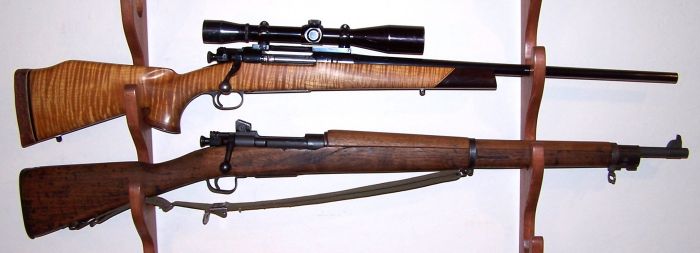
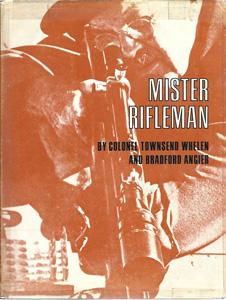
Sadly I ran across this List well after the Army & I had a very amicable divorce. But none the less, It really captures some of the spirit and humor of Presidents Reagan’s Army.
I hope that you like it
Grumpy
Skippy’s List: The things Skippy is no longer allowed to do in the U.S. Army
Explanations of these events:
b) I witnessed another soldier do it. (Like the Sergeant we had, that basically went insane, and crucified some dead mice.)
c) Was spontaneously informed I was not allowed to do. (Like start a porn studio.)
d) Was the result of a clarification of the above. (“What about especially patriotic porn?”)
e) I was just minding my own business, when something happened. (“Schwarz…what is *that*?” said the Sgt, as he pointed to the back of my car? “Um….a rubber sheep…I can explain why that’s there….”)
To explain how I’ve stayed out of jail/alive/not beaten up too badly….. I’m funny, so they let me live.
The some of the 213 Things….
1. Not allowed to watch Southpark when I’m supposed to be working.
2. My proper military title is “Specialist Schwarz” not “Princess Anastasia”.
3. Not allowed to threaten anyone with black magic.
4. Not allowed to challenge anyone’s disbelief of black magic by asking for hair.
5. Not allowed to get silicone breast implants.
6. Not allowed to play “Pulp Fiction” with a suction-cup dart pistol and any officer.
7. Not allowed to add “In accordance with the prophesy” to the end of answers I give to a question an officer asks me.
8. Not allowed to add pictures of officers I don’t like to War Criminal posters.
9. Not allowed to title any product “Get Over it”.
10. Not allowed to purchase anyone’s soul on government time.
11. Not allowed to join the Communist Party.
12. Not allowed to join any militia.
13. Not allowed to form any militia.
14. Not allowed out of my office when the president visited Sarajevo.
15. Not allowed to train adopted stray dogs to “Sic Brass!”
16. Must get a haircut even if it tampers with my “Samson like powers”.
17. God may not contradict any of my orders.
18. May no longer perform my now (in)famous “Barbie Girl Dance” while on duty.
19. May not call any officers immoral, untrustworthy, lying, slime, even if I’m right.
20. Must not taunt the French any more.
21. Must attempt to not antagonize SAS.
22. Must never call an SAS a “Wanker”.
23. Must never ask anyone who outranks me if they’ve been smoking crack.
24. Must not tell any officer that I am smarter than they are, especially if it’s true.
25. Never confuse a Dutch soldier for a French one.
26. Never tell a German soldier that “We kicked your ass in World War 2!”
27. Don’t tell Princess Di jokes in front of the paras (British Airborne).
28. Don’t take the batteries out of the other soldiers alarm clocks (Even if they do hit snooze about forty times).
29. The Irish MPs are not after “Me frosted lucky charms”.
30. Not allowed to wake an Non-Commissioned Officer by repeatedly banging on the head with a bag of trash.
31. Not allowed to let sock puppets take responsibility for any of my actions.
32. Not allowed to let sock puppets take command of my post.
33. Not allowed to chew gum at formation, unless I brought enough for everybody.
34. (Next day) Not allowed to chew gum at formation even if I *did* bring enough for everybody.
35. Not allowed to sing “High Speed Dirt” by Megadeth during airborne operations. (“See the earth below/Soon to make a crater/Blue sky, black death, I’m off to meet my maker”)
36. Can’t have flashbacks to wars I was not in. (The Spanish-American War isn’t over).
37. Our medic is called “Sgt Larwasa”, not “Dr. Feelgood”.
38. Our supply Sgt is “Sgt Watkins” not “Sugar Daddy”.
39. Not allowed to ask for the day off due to religious purposes, on the basis that the world is going to end, more than once.
40. I do not have super-powers.
41. “Keep on Trucking” is *not* a psychological warfare message.
42. Not allowed to attempt to appeal to mankind’s baser instincts in recruitment posters.
43. Camouflage body paint is not a uniform.
44. I am not the atheist chaplain.
45. I am not allowed to “Go to Bragg boulevard and shake daddy’s little money maker for twenties stuffed into my undies”.
46. I am not authorized to fire officers.
47. I am not a citizen of Texas, and those other, forty-nine, lesser states.
48. I may not use public masturbation as a tool to demonstrate a flaw in a command decision.
49. Not allowed to trade military equipment for “magic beans”.
50. Not allowed to sell magic beans during duty hours.
51. Not allowed to quote “Dr Seuss” on military operations.
52. Not allowed to yell “Take that Cobra” at the rifle range.
53. Not allowed to quote “Full Metal Jacket “ at the rifle range.
54. “Napalm sticks to kids” is *not* a motivational phrase.
55. An order to “Put Kiwi on my boots” does *not* involve fruit.
56. An order to “Make my Boots black and shiny” does not involve electrical tape.
57. The proper response to a lawful order is not “Why?”
58. The following words and phrases may not be used in a cadence- Budding sexuality, necrophilia, I hate everyone in this formation and wish they were dead, sexual lubrication, black earth mother, all Marines are latent homosexuals, Tantric yoga, Gotterdammerung, Korean hooker, Eskimo Nell, we’ve all got jackboots now, slut puppy, or any references to squid.
59. May not make posters depicting the leadership failings of my chain of command.
60. “The Giant Space Ants” are not at the top of my chain of command.
61. If one soldier has a 2nd Lt bar on his uniform, and I have an E-4 on mine It means he outranks me. It does not mean “I have been promoted three more times than you”.
62. It is better to beg forgiveness than to ask permission, no longer applies to Specialist Schwarz.
63. Command decisions do *not* need to be ratified by a 2/3 majority.
64. Inflatable novelties do *not* entitle me to BAQ or Separation pay.
65. There are no evil clowns living under my bed.
66. There is no “Anti-Mime” campaign in Bosnia.
67. I am not the Psychological Warfare Mascot.
68. I may not line my helmet with tin foil to “Block out the space mind control lasers”.
69. May not pretend to be a fascist stormtrooper, while on duty.
70. I am not authorized to prescribe any form of medication.
71. I must not flaunt my deviances in front of my chain of command.
72. May not wear gimp mask while on duty.
73. No military functions are to be performed “Skyclad”.
Now I know that this will not amuse a lot of Officers and Senior NCO’s. But Oh well!

I just do not care how good you are with a blade or how good a shape you are. About 9 times out of 10.
One is going is experience some serious bodily trauma.
Also I just love watching this film.

